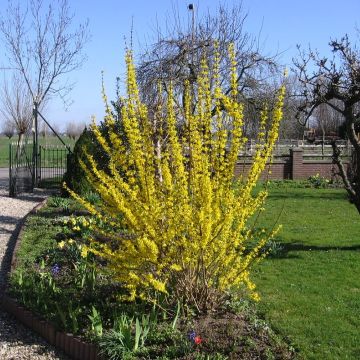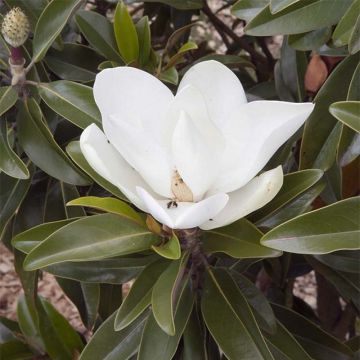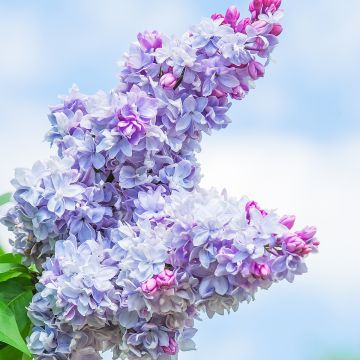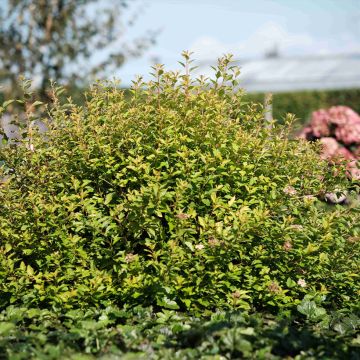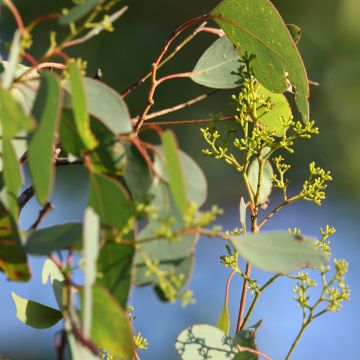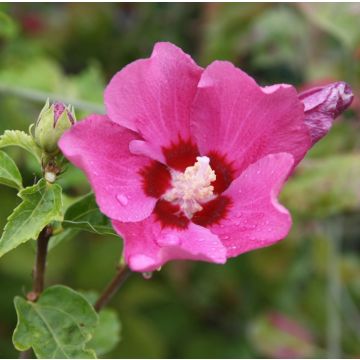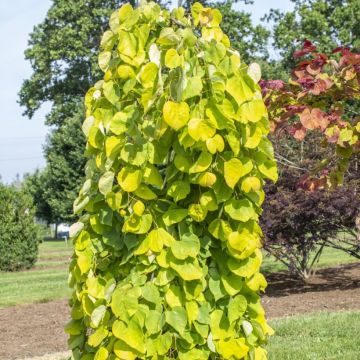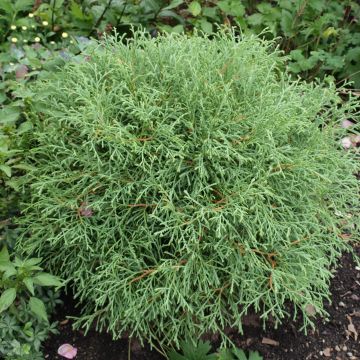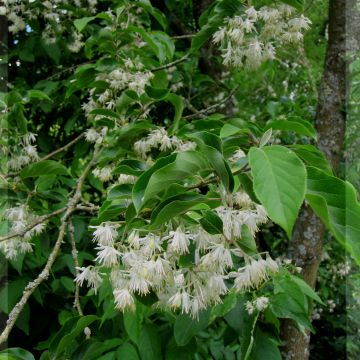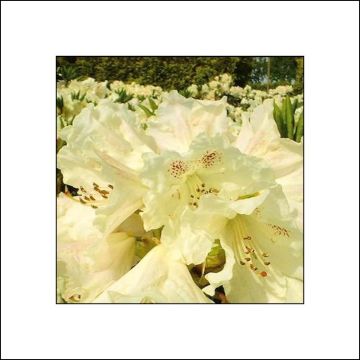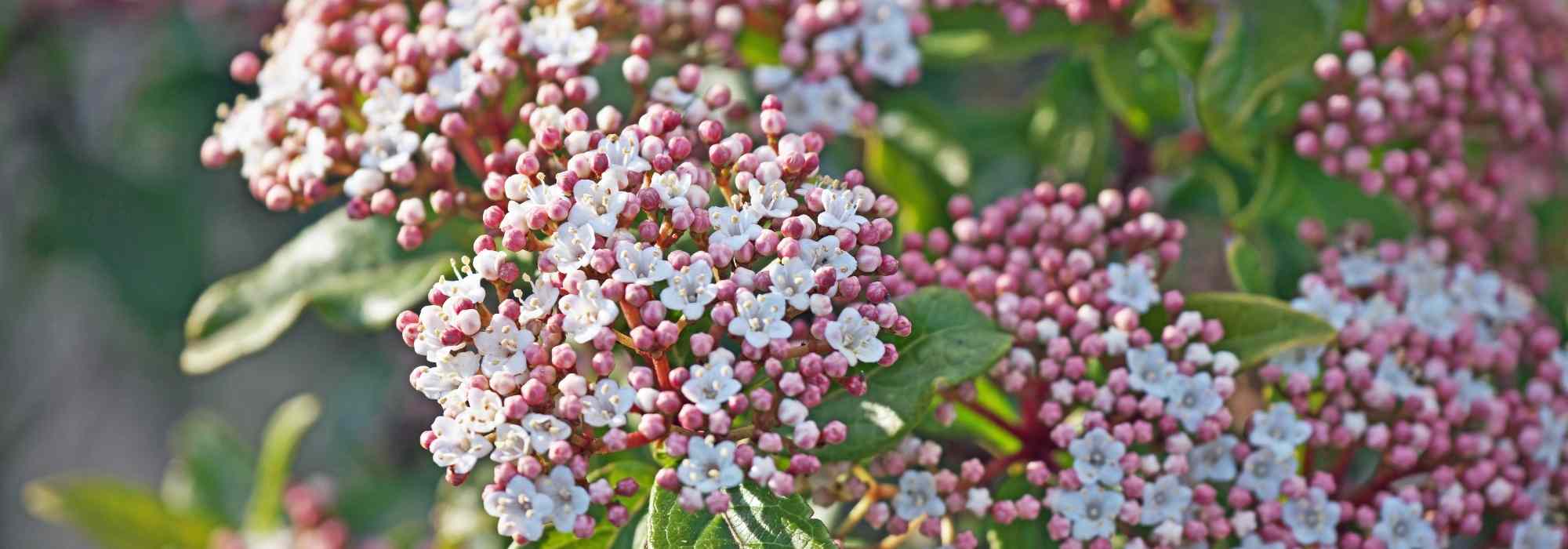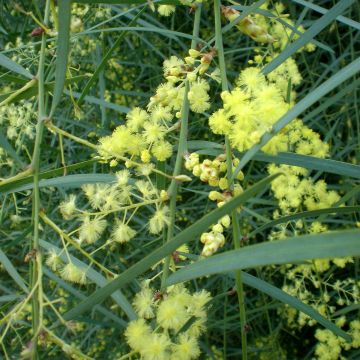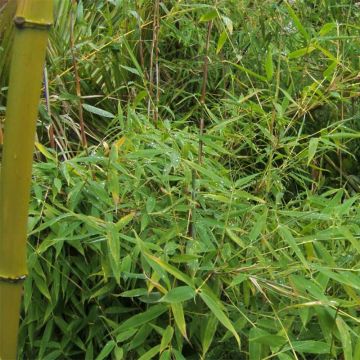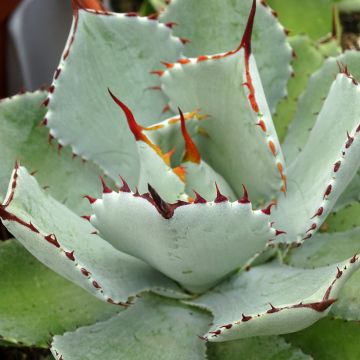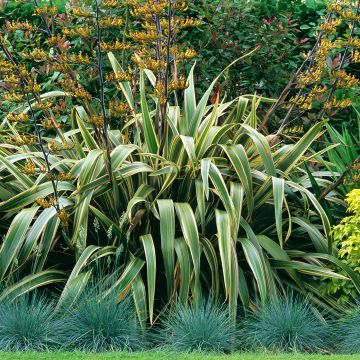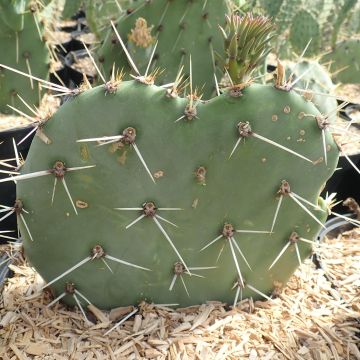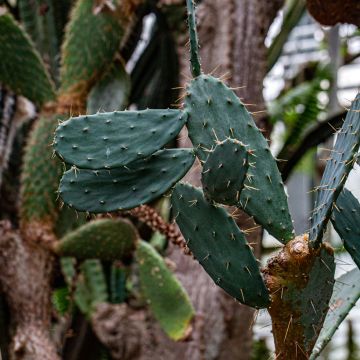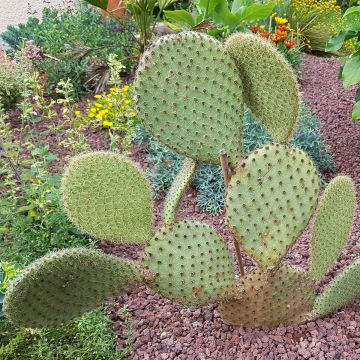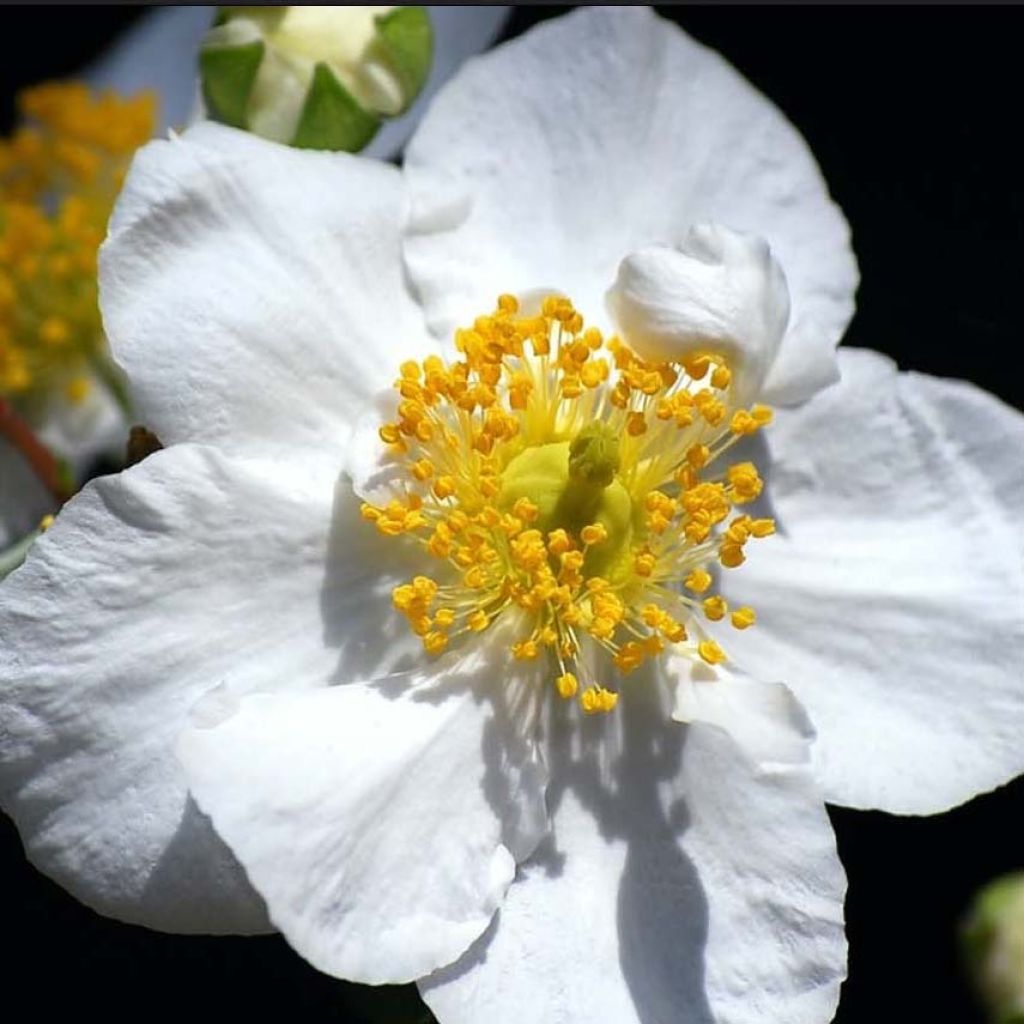

Carpenteria californica Bodnant - Carpentière de Californie
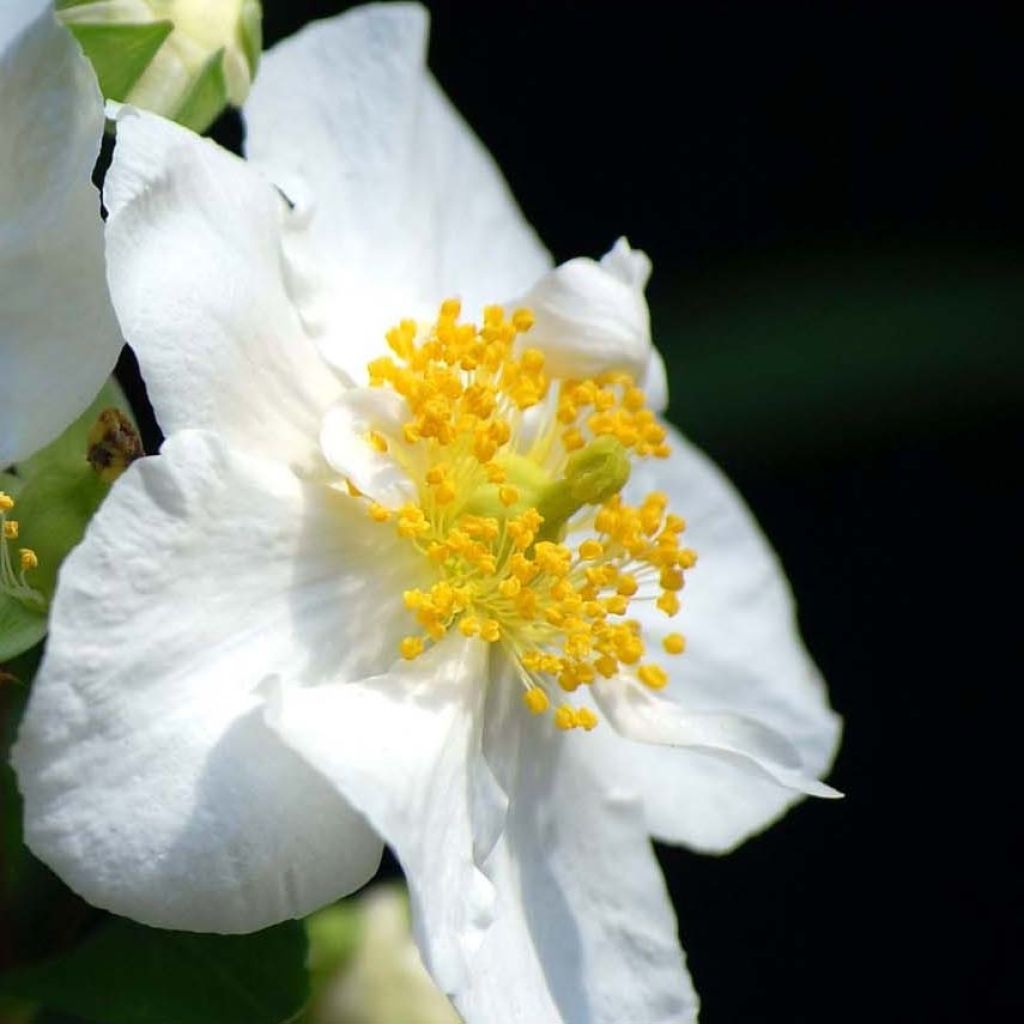

Carpenteria californica Bodnant - Carpentière de Californie
Carpenteria californica Bodnant
Carpenteria californica Bodnant
Bush Anemone, Tree Anemone
Beautifully ramified young plant, in excellent condition. It is already thriving in the flowerbed. I am delighted. Thank you!
Françoise, 04/06/2023
Special offer!
Receive a €20 voucher for any order over €90 (excluding delivery costs, credit notes, and plastic-free options)!
1- Add your favorite plants to your cart.
2- Once you have reached €90, confirm your order (you can even choose the delivery date!).
3- As soon as your order is shipped, you will receive an email containing your voucher code, valid for 3 months (90 days).
Your voucher is unique and can only be used once, for any order with a minimum value of €20, excluding delivery costs.
Can be combined with other current offers, non-divisible and non-refundable.
Home or relay delivery (depending on size and destination)
Schedule delivery date,
and select date in basket
This plant carries a 24 months recovery warranty
More information
We guarantee the quality of our plants for a full growing cycle, and will replace at our expense any plant that fails to recover under normal climatic and planting conditions.

Would this plant suit my garden?
Set up your Plantfit profile →
Description
Carpenteria californica 'Bodnant' is a variety of Californian Carpenteria known for its increased cold resistance. Otherwise, the bush closely resembles the beautiful wild species found in Californian scrub vegetation. Its evergreen foliage is decorative all year round, and its lightly scented spring flowering, in clusters of large white anemones with golden hearts, is simply dazzling. Rarely planted in gardens, it will make a sensation when isolated, in a hedge, or in a shrub bed with other dry land species.
Carpenteria californica 'Bodnant' belongs to the Hydrangea family, it is a cousin of mock oranges and Hydrangeas. It is native to the foothills of the Sierra Nevada in California, where it can be found growing on dry, gravelly slopes, sometimes at the edge of oak and pine forests, up to 1300m (4265ft) in altitude. In nature, the plant can reach 5 to 6m (16ft 5in to 19ft 8in) in height, but in our gardens, it rarely exceeds 3m (9ft 10in) in height and spread. The 'Bodnant' cultivar seems to tolerate very brief freezes of around -15 °C (5 °F), according to some sources, in well-drained soil and sheltered exposure. It has been awarded by the Royal Horticultural Society in England for its exceptional qualities.
A rather slow-growing shrub with an erect, slightly divergent, bushy habit, Carpenteria 'Bodnant' has evergreen foliage that is dark olive green in colour, glossy on the upper side, lighter underneath; its narrow, lanceolate, pointed leaves are velvety on the reverse and measure 8 to 10cm (3.1 to 3.9in) in length. Its bark, brown in colour, peels with age. Flowering occurs from May to July depending on the climate, and lasts an average of 6 weeks. It takes the form of clusters composed of several pure white 5-petaled flowers, 5cm (2in) in diameter, cup-shaped, open on a golden yellow stamen heart. They are lightly scented and resemble Japanese anemones. After pollination by insects, small tough capsules containing numerous small seeds are formed.
Carpenteria californica is planted as a hedge, in a bed, isolated or trained along a wall. This Mediterranean climate shrub will thrive in coastal or southern gardens, provided it is planted in a rocky, well-drained soil with no excess limestone. Easy to grow, it mainly fears excess water in winter, just like large Cistus, Oleanders, wild roses, and other evergreen Ceanothus with which it creates beautiful spring and summer scenes. In cold climates, it can be grown in a large pot, like an orangery plant.
Report an error about the product description
Carpenteria californica Bodnant in pictures
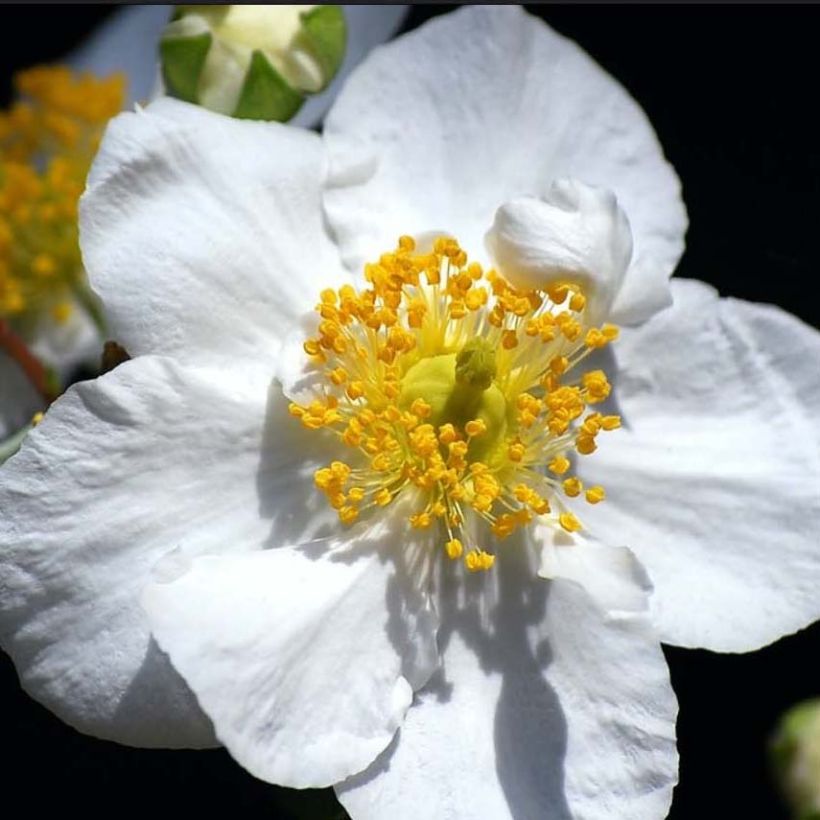

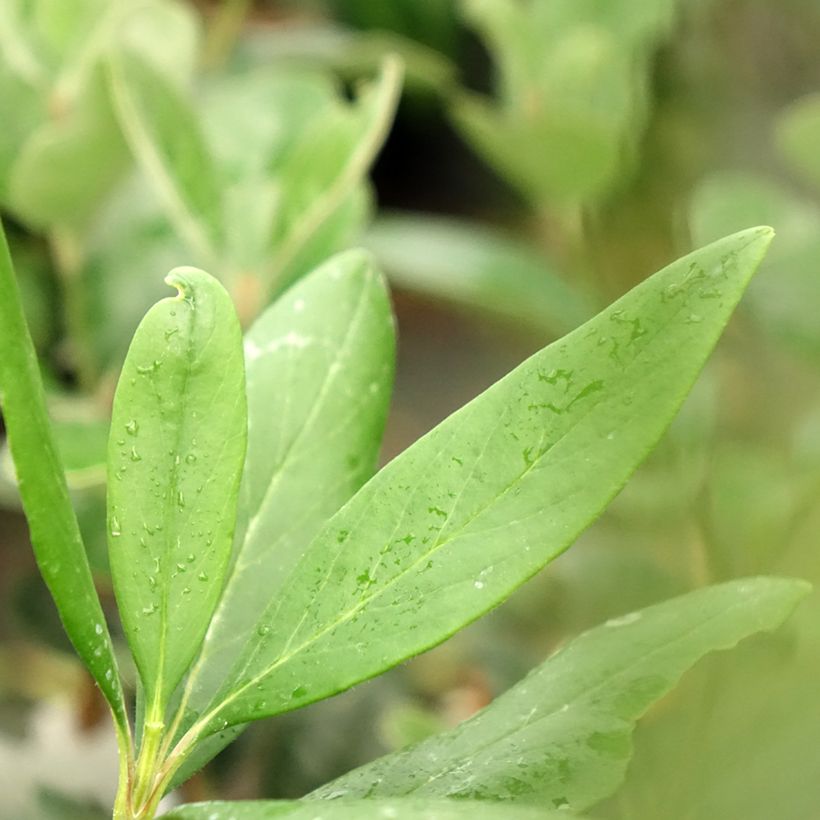

Plant habit
Flowering
Foliage
Botanical data
Carpenteria
californica
Bodnant
Hydrangeaceae
Bush Anemone, Tree Anemone
North America
Other Shrubs A to Z
View all →Planting and care
Plant Carpenteria californica 'Bodnant' in a very well-drained, even rocky, soil, but enriched with compost, preferably with an acidic tendency, in a very sheltered position, especially from cold winds, in partial shade or full sun. This bush particularly fears excessive water in winter. Once well rooted, it tolerates summer drought very well. The plant is hardy up to about -12°C/-15°C (5 °F), but the foliage can be damaged from -9°C (15.8 °F). If the branches freeze in winter, the bush is capable of regrowing from the stump, but quite late in spring.
Planting period
Intended location
Care
Planting & care advice
-
, onOrder confirmed
Reply from on Promesse de fleurs
Similar products
Haven't found what you were looking for?
Hardiness is the lowest winter temperature a plant can endure without suffering serious damage or even dying. However, hardiness is affected by location (a sheltered area, such as a patio), protection (winter cover) and soil type (hardiness is improved by well-drained soil).

Photo Sharing Terms & Conditions
In order to encourage gardeners to interact and share their experiences, Promesse de fleurs offers various media enabling content to be uploaded onto its Site - in particular via the ‘Photo sharing’ module.
The User agrees to refrain from:
- Posting any content that is illegal, prejudicial, insulting, racist, inciteful to hatred, revisionist, contrary to public decency, that infringes on privacy or on the privacy rights of third parties, in particular the publicity rights of persons and goods, intellectual property rights, or the right to privacy.
- Submitting content on behalf of a third party;
- Impersonate the identity of a third party and/or publish any personal information about a third party;
In general, the User undertakes to refrain from any unethical behaviour.
All Content (in particular text, comments, files, images, photos, videos, creative works, etc.), which may be subject to property or intellectual property rights, image or other private rights, shall remain the property of the User, subject to the limited rights granted by the terms of the licence granted by Promesse de fleurs as stated below. Users are at liberty to publish or not to publish such Content on the Site, notably via the ‘Photo Sharing’ facility, and accept that this Content shall be made public and freely accessible, notably on the Internet.
Users further acknowledge, undertake to have ,and guarantee that they hold all necessary rights and permissions to publish such material on the Site, in particular with regard to the legislation in force pertaining to any privacy, property, intellectual property, image, or contractual rights, or rights of any other nature. By publishing such Content on the Site, Users acknowledge accepting full liability as publishers of the Content within the meaning of the law, and grant Promesse de fleurs, free of charge, an inclusive, worldwide licence for the said Content for the entire duration of its publication, including all reproduction, representation, up/downloading, displaying, performing, transmission, and storage rights.
Users also grant permission for their name to be linked to the Content and accept that this link may not always be made available.
By engaging in posting material, Users consent to their Content becoming automatically accessible on the Internet, in particular on other sites and/or blogs and/or web pages of the Promesse de fleurs site, including in particular social pages and the Promesse de fleurs catalogue.
Users may secure the removal of entrusted content free of charge by issuing a simple request via our contact form.
The flowering period indicated on our website applies to countries and regions located in USDA zone 8 (France, the United Kingdom, Ireland, the Netherlands, etc.)
It will vary according to where you live:
- In zones 9 to 10 (Italy, Spain, Greece, etc.), flowering will occur about 2 to 4 weeks earlier.
- In zones 6 to 7 (Germany, Poland, Slovenia, and lower mountainous regions), flowering will be delayed by 2 to 3 weeks.
- In zone 5 (Central Europe, Scandinavia), blooming will be delayed by 3 to 5 weeks.
In temperate climates, pruning of spring-flowering shrubs (forsythia, spireas, etc.) should be done just after flowering.
Pruning of summer-flowering shrubs (Indian Lilac, Perovskia, etc.) can be done in winter or spring.
In cold regions as well as with frost-sensitive plants, avoid pruning too early when severe frosts may still occur.
The planting period indicated on our website applies to countries and regions located in USDA zone 8 (France, United Kingdom, Ireland, Netherlands).
It will vary according to where you live:
- In Mediterranean zones (Marseille, Madrid, Milan, etc.), autumn and winter are the best planting periods.
- In continental zones (Strasbourg, Munich, Vienna, etc.), delay planting by 2 to 3 weeks in spring and bring it forward by 2 to 4 weeks in autumn.
- In mountainous regions (the Alps, Pyrenees, Carpathians, etc.), it is best to plant in late spring (May-June) or late summer (August-September).
The harvesting period indicated on our website applies to countries and regions in USDA zone 8 (France, England, Ireland, the Netherlands).
In colder areas (Scandinavia, Poland, Austria...) fruit and vegetable harvests are likely to be delayed by 3-4 weeks.
In warmer areas (Italy, Spain, Greece, etc.), harvesting will probably take place earlier, depending on weather conditions.
The sowing periods indicated on our website apply to countries and regions within USDA Zone 8 (France, UK, Ireland, Netherlands).
In colder areas (Scandinavia, Poland, Austria...), delay any outdoor sowing by 3-4 weeks, or sow under glass.
In warmer climes (Italy, Spain, Greece, etc.), bring outdoor sowing forward by a few weeks.






























